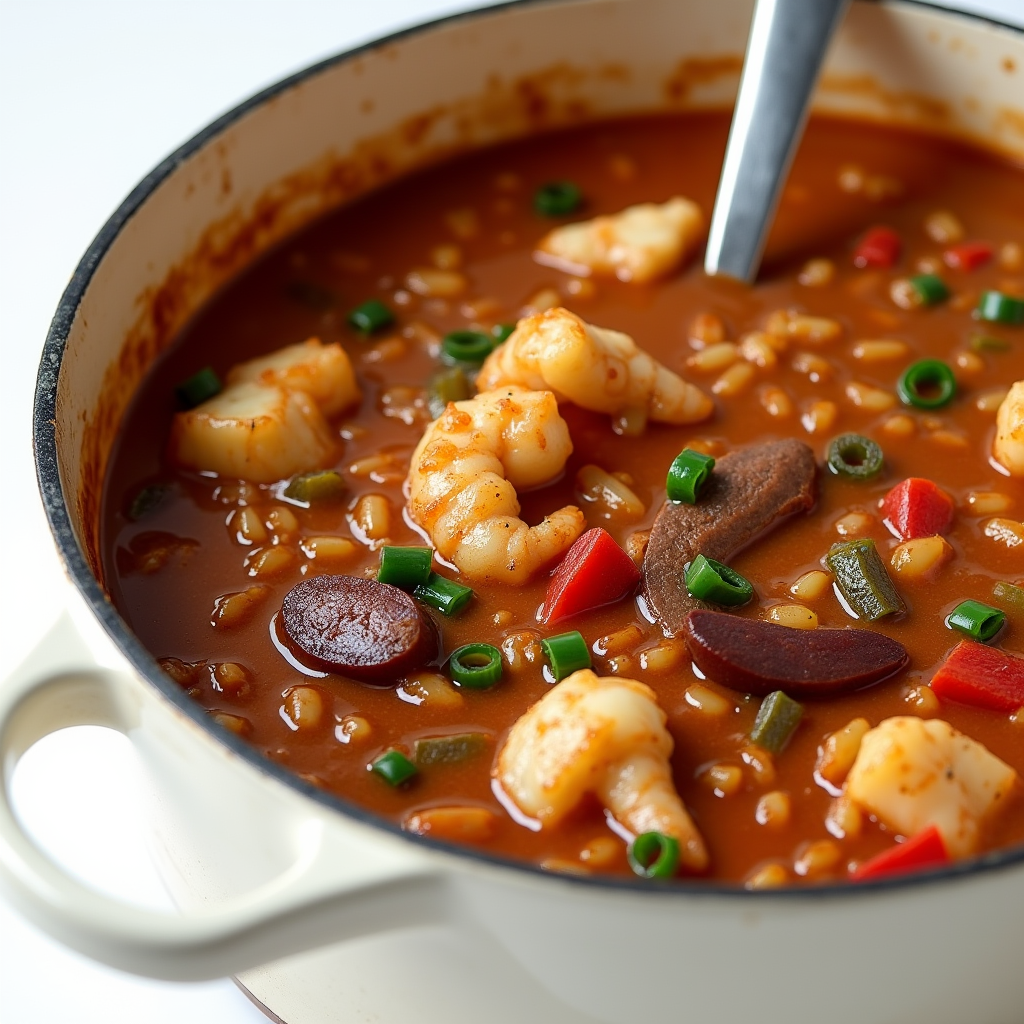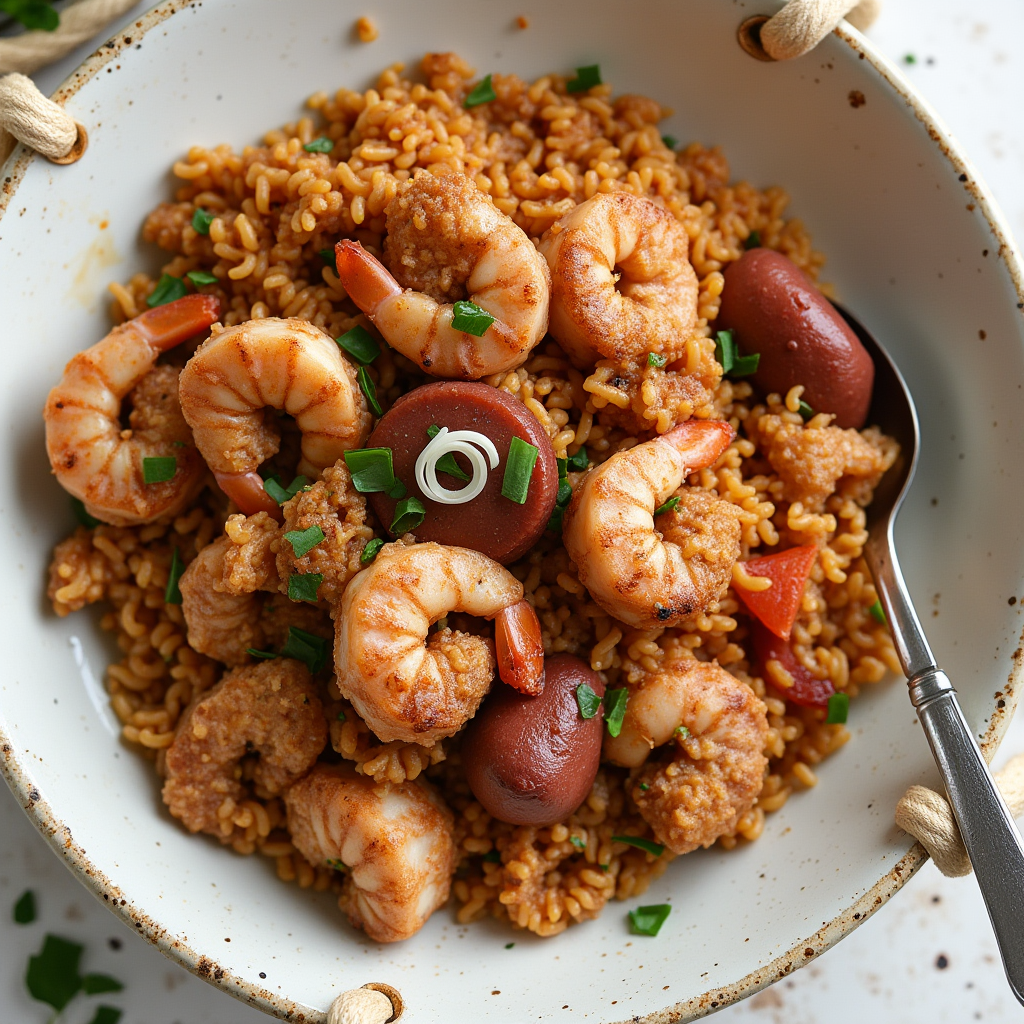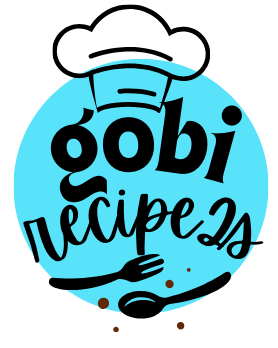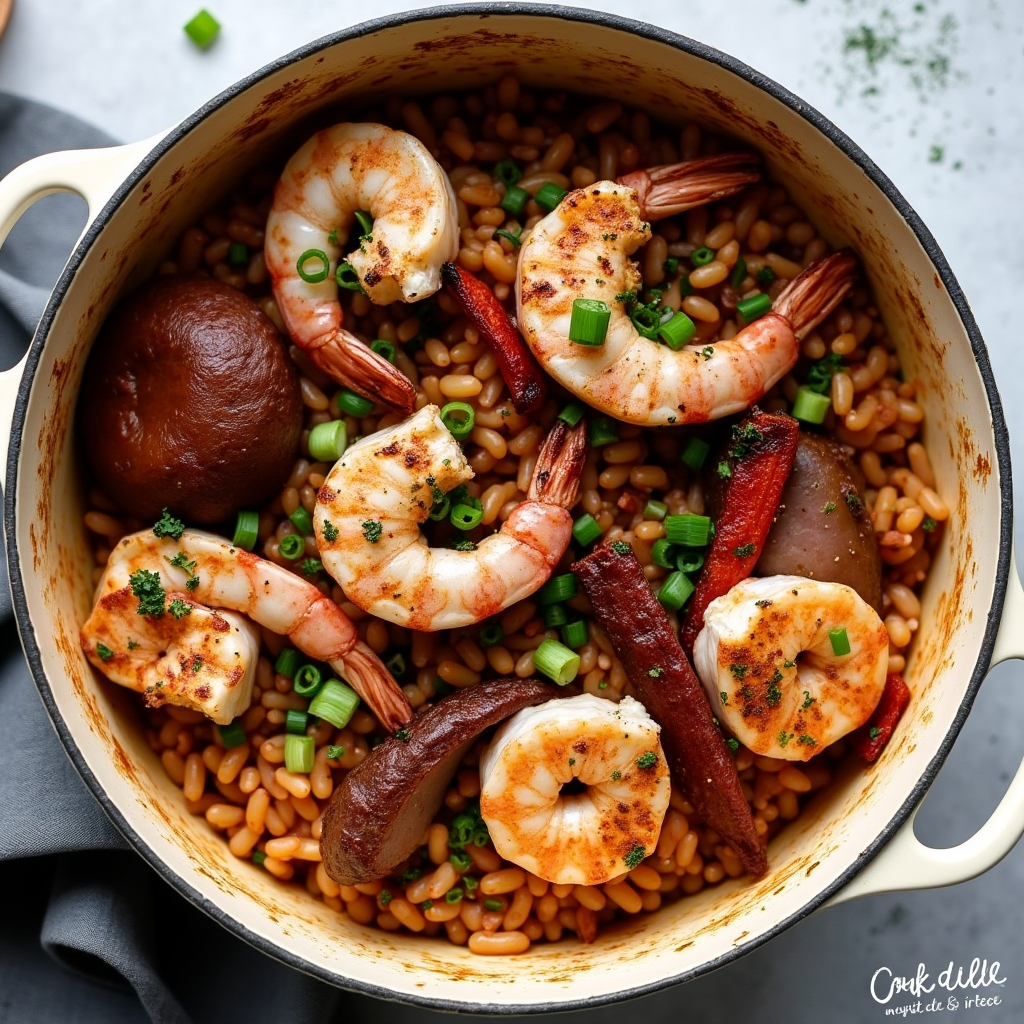The story of Classic Jambalaya is deeply tied to the cultural and culinary history of Louisiana. Rooted in Spanish and French influences, this beloved dish emerged during the 18th century when settlers adapted their traditional recipes to incorporate local ingredients. The name “jambalaya” is thought to derive from the Provençal word jambalaia, meaning a mix or jumble, which perfectly describes this one-pot wonder.
As settlers experimented with New World ingredients, they combined rice, spices, and proteins, creating a dish that reflected the diversity of the region. Over time, African, Caribbean, and Native American flavors also enriched the recipe, making it a culinary tapestry. Whether enjoyed at family gatherings or large festivals, Classic Jambalaya symbolizes the vibrant spirit of Louisiana.
The dish is not only a testament to culinary creativity but also a marker of how cultures blend through food. Today, it remains a favorite across the globe.
Key Ingredients for a Perfect Classic Jambalaya

The heart of Classic Jambalaya lies in its simple yet flavorful ingredients. Each component contributes to the rich, layered taste that makes this dish iconic. Here’s what you need for an authentic experience:
- Rice: Long-grain rice is a must for absorbing flavors without becoming mushy.
- Proteins: Popular choices include chicken, sausage (especially andouille), shrimp, or a combination.
- Vegetables: The “holy trinity” of Cajun cooking—onions, bell peppers, and celery—forms the base of the dish.
- Seasonings: Creole or Cajun seasoning, paprika, thyme, and bay leaves add depth.
- Broth: Chicken or seafood stock ensures a flavorful base.
- Tomatoes: Used in Creole versions, they provide a subtle acidity and sweetness.
By prioritizing high-quality ingredients, you can craft a Classic Jambalaya that bursts with authentic flavor. Small adjustments, such as fresh herbs or spice levels, let you customize the dish to suit your preferences.
Traditional Cooking Methods and Techniques
Cooking Classic Jambalaya involves precision and patience, as the method directly impacts the final flavor. Traditionally, it is prepared in a large cast-iron pot, which evenly distributes heat and allows the ingredients to cook uniformly.
- Sautéing: Start by sautéing the holy trinity of vegetables in oil or butter until they soften.
- Browning Proteins: Add your proteins to the pot, cooking them until they develop a caramelized exterior.
- Layering Flavors: Incorporate your spices, tomatoes (if Creole style), and broth, ensuring the flavors meld together.
- Cooking Rice: Stir in the rice, reduce the heat, and allow it to simmer. Avoid over-stirring to prevent the rice from becoming gummy.
- Final Touches: Once the rice is tender, fold in seafood or any delicate proteins at the end to avoid overcooking.
Adhering to these steps ensures that your Classic Jambalaya achieves its signature balance of textures and flavors.
Types of Jambalaya: Creole vs. Cajun
While both versions are delicious, Classic Jambalaya comes in two distinct types: Creole and Cajun. Each has unique characteristics that reflect the cultural nuances of Louisiana.
Creole Jambalaya
- Includes tomatoes, which give it a reddish hue.
- Often incorporates a mix of seafood and other proteins.
- Originates from New Orleans, where French and Spanish influences dominate.
Cajun Jambalaya
- Tomato-free, resulting in a browner appearance.
- Features a smokier flavor, often achieved by browning meats more intensely.
- Stems from rural Louisiana, where simplicity and local ingredients were key.
Both types celebrate the essence of Louisiana cuisine, but your choice may depend on personal taste. Regardless of the style, each bite of Classic Jambalaya offers a comforting blend of tradition and flavor.
Choosing the Right Protein for Your Jambalaya
Protein selection is vital in crafting a standout Classic Jambalaya. Depending on your preferences, you can mix and match options to create a balanced and satisfying dish.
- Chicken: A staple in most recipes, chicken adds a hearty element to the dish. Opt for thighs, as they remain tender and juicy during cooking.
- Andouille Sausage: Known for its smoky and spicy profile, this sausage enhances the dish’s depth.
- Seafood: Shrimp, crawfish, and crab bring a coastal flair to Creole-style recipes.
- Pork: Ham or tasso (a spiced, cured pork) adds a savory note.
For the best results, aim for fresh, high-quality proteins. Combining multiple options ensures your Classic Jambalaya is rich and layered in flavor.
Vegetarian and Vegan Jambalaya Options
For plant-based diners, Classic Jambalaya can be adapted without sacrificing taste. By swapping out traditional proteins and broth, you can create a dish that aligns with vegetarian or vegan diets.
Key Substitutes:
- Protein: Replace meat with plant-based sausages, tofu, or tempeh.
- Broth: Use vegetable stock as the base.
- Flavor Boosters: Incorporate smoked paprika, liquid smoke, or nutritional yeast for depth.
Optional Additions:
- Black beans or chickpeas for protein.
- Mushrooms for a meaty texture.
- Fresh herbs like parsley or green onions for brightness.
This approach preserves the essence of Classic Jambalaya while catering to dietary needs, proving that this versatile dish can be enjoyed by everyone.
How to Make Jambalaya in One Pot
One of the joys of Classic Jambalaya is its simplicity, especially when prepared in a single pot. This method not only saves time but also enhances the dish’s flavor, as the ingredients cook together harmoniously.
Steps for Success:
- Heat oil in a large pot and sauté the holy trinity.
- Brown your proteins to build a robust base.
- Deglaze the pot with broth, scraping up flavorful bits.
- Add rice, spices, and tomatoes (if Creole style).
- Simmer gently, stirring occasionally to prevent sticking.
- Incorporate seafood or delicate proteins during the last 10 minutes of cooking.
This straightforward method makes Classic Jambalaya an ideal choice for weeknight dinners or large gatherings.
Common Mistakes to Avoid When Making Jambalaya
Even seasoned cooks can encounter pitfalls when preparing Classic Jambalaya. Avoid these common errors to ensure a perfect dish every time.
- Overcooking the Rice: Keep an eye on the cooking time to maintain a firm texture.
- Using Too Much Liquid: Excess broth can lead to a mushy consistency.
- Neglecting to Brown Proteins: Skipping this step diminishes the dish’s depth.
- Overloading with Spices: While bold flavors are essential, balance is key to avoiding overpowering heat.
- Adding Seafood Too Early: Incorporate seafood near the end to prevent it from becoming rubbery.
By addressing these issues, you can confidently create a flawless Classic Jambalaya that impresses every time.
Classic Jambalaya: Pairings, Health Benefits, Modern Twists, and More

Pairing Classic Jambalaya with Side Dishes and Drinks
While Classic Jambalaya is a hearty dish on its own, pairing it with the right sides and beverages can elevate your dining experience. These accompaniments balance its bold flavors and enhance the meal’s appeal.
Perfect Side Dishes:
- Cornbread: A slightly sweet option that complements the spice.
- Collard Greens: Adds a tangy, earthy note to the meal.
- Cucumber Salad: Refreshing and light, it contrasts the dish’s richness.
- Hush Puppies: Crispy and satisfying, they provide a delightful texture.
Ideal Drinks:
- Sweet Tea: Balances the spice with a hint of sweetness.
- Beer: Light lagers or ales pair seamlessly with the robust flavors.
- Wine: Dry whites or medium-bodied reds enhance the seasoning.
- Cocktails: A classic Hurricane or mint julep keeps the Louisiana vibe alive.
These pairings ensure your Classic Jambalaya experience is both flavorful and memorable.
Health Benefits of Classic Jambalaya Ingredients
Beyond its incredible taste, Classic Jambalaya offers surprising nutritional benefits, thanks to its wholesome ingredients. By focusing on fresh, high-quality components, you can enjoy this dish as part of a balanced diet.
Nutritional Highlights:
- Rice: Provides a steady source of energy through complex carbohydrates.
- Vegetables: Bell peppers, onions, and celery are rich in vitamins, antioxidants, and fiber.
- Proteins: Chicken and seafood supply lean protein, while sausage offers iron and flavor.
- Spices: Paprika and cayenne pepper contain capsaicin, which may boost metabolism.
Customizing for Health:
- Use brown rice for added fiber.
- Choose leaner protein options, such as skinless chicken or turkey sausage.
- Limit sodium by using low-sodium broth and seasoning blends.
These small adjustments allow you to enjoy Classic Jambalaya guilt-free while reaping its health benefits.
Best Occasions for Serving Classic Jambalaya
Classic Jambalaya is a versatile dish that suits various occasions, from casual family dinners to grand celebrations. Its adaptability and crowd-pleasing flavor make it a favorite for any gathering.
Top Occasions:
- Festivals: A staple at Mardi Gras, it embodies Louisiana’s festive spirit.
- Game Nights: Its one-pot preparation makes it easy to serve to a group.
- Family Reunions: Large batches ensure everyone gets a hearty portion.
- Potlucks: Travel-friendly and packed with flavor, it’s always a hit.
- Holidays: Add it to a holiday spread for a unique twist on traditional dishes.
With its ability to feed a crowd and its universal appeal, Classic Jambalaya shines as a dish for all occasions.
Modern Twists on the Classic Jambalaya Recipe
While traditional recipes are timeless, modern interpretations of Classic Jambalaya bring fresh creativity to the table. These twists cater to evolving tastes and dietary preferences.
Innovative Variations:
- Quinoa Jambalaya: Swap rice for quinoa to boost protein and fiber.
- Seafood-Only Jambalaya: Focus on shrimp, crab, and scallops for a coastal vibe.
- Spicy Vegan Jambalaya: Use plant-based sausage and jackfruit for a bold, meat-free option.
- Fusion Jambalaya: Add soy sauce and ginger for an Asian-inspired version.
Experimentation Tips:
- Play with seasonings to suit your spice tolerance.
- Incorporate seasonal vegetables for freshness.
- Try smoked meats or alternative grains for added depth.
Modernizing Classic Jambalaya is a fun way to keep the dish exciting while respecting its rich history.
Jambalaya Around the World: Regional Variations
Although Classic Jambalaya is a Louisiana specialty, its concept resonates globally, leading to regional adaptations inspired by local cuisines.
Examples of Regional Variations:
- Spain: Paella shares similarities with jambalaya, using saffron and seafood.
- Caribbean: Rice and peas with jerk chicken mirrors the bold spices of jambalaya.
- Southeast Asia: Nasi goreng, an Indonesian fried rice dish, incorporates shrimp and spicy seasonings.
- West Africa: Jollof rice, a staple in many countries, features tomatoes and peppers akin to Creole jambalaya.
These global counterparts highlight how Classic Jambalaya connects culinary traditions, proving its universal appeal.
Essential Tools for Jambalaya Cooking
The right tools can simplify the process of making Classic Jambalaya while enhancing its flavor and texture. Investing in quality equipment ensures consistent results.
Must-Have Tools:
- Cast-Iron Pot: Retains heat evenly, perfect for one-pot dishes.
- Sharp Knife: Ensures precise chopping of proteins and vegetables.
- Wooden Spoon: Gentle on cookware and ideal for stirring.
- Measuring Tools: Accurate measurements are crucial for balanced seasoning.
- Ladle: Handy for serving generous portions.
These tools are not only practical but also help preserve the authenticity of your Classic Jambalaya.
Frequently Asked Questions About Jambalaya

Is Jambalaya a one-pot meal?
Yes, Jambalaya is indeed a one-pot meal. In fact, its preparation involves cooking all the ingredients—rice, meat, seafood, and vegetables—together in a single pot. This not only simplifies the cooking process but also enhances the flavors as they blend seamlessly.
What is in Jambalaya?
Jambalaya typically consists of a variety of ingredients that include rice, chicken, sausage (usually andouille), shrimp, or other seafood. Additionally, it features vegetables like bell peppers, onions, and celery, which are often referred to as the “holy trinity” in Cajun and Creole cooking. Finally, flavorful seasonings such as garlic, paprika, thyme, and cayenne pepper give it a rich, spicy taste.
How do you make the best Jambalaya?
To make the best Jambalaya, begin by sautéing the holy trinity of vegetables (onions, bell peppers, and celery) along with your chosen proteins, such as chicken, sausage, or shrimp. Next, add your spices, followed by rice and a flavorful broth. Bring the mixture to a simmer and cook until the rice absorbs all the liquid. For added depth, stir in tomatoes for a Creole-style version or skip them for the Cajun version. By balancing the seasoning and cooking everything in one pot, you can achieve a perfect blend of flavors.
Where does Jambalaya come from?
Jambalaya originates from Louisiana, blending influences from French, Spanish, and West African cuisines. Over time, it became a signature dish of both Cajun and Creole cultures, with each adding its unique twist. While the Creole version incorporates tomatoes, the Cajun variety typically leaves them out, focusing instead on smoky, spicy flavors.
Conclusion
Classic Jambalaya is more than just a dish; it’s a celebration of cultural heritage, flavor, and versatility. From its rich history to its modern adaptations, it continues to captivate food lovers worldwide. Whether you’re preparing it for a festive gathering or exploring new twists, this iconic recipe never fails to impress. With the right ingredients, tools, and techniques, anyone can master the art of making Classic Jambalaya.

